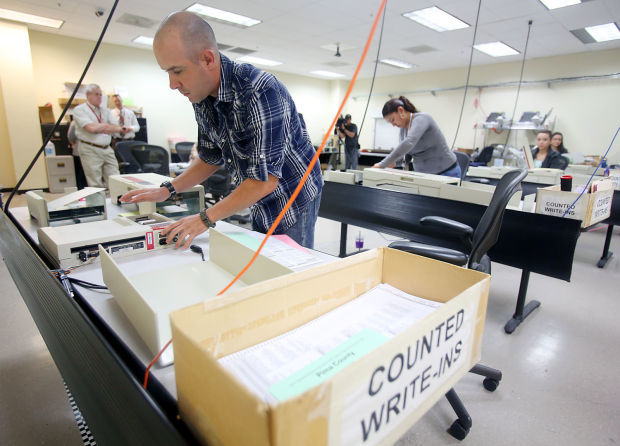PHOENIX — Any losing candidate in the general election who is counting on an automatic recount needs to come close to winning.
Really close.
In statewide races, there is a general law that requires a recount if the margin of votes between the two candidates is one-tenth of 1 percent. With perhaps 2.3 million votes already counted or yet to be tabulated in the race for U.S. Senate between Democrat Kyrsten Sinema and Republican Martha McSally, that would translate out to about 2,300 votes.
But here’s the thing.
The same law says a recount is based on the lesser of that 0.1 percent or 200 votes. And given the number of votes cast statewide, it would be the 200 votes that would trigger a new count. In other words, McSally would have to come within 200 votes of Sinema.
That same law applies to the race for school superintendent, though that contest does not appear close.
But the final tally in the race for secretary of state could come within that margin. In fact, at one point this week the difference was just 150 votes, with Democrat Katie Hobbs in the lead over Republican Steve Gaynor.
It could take days before the final tallies are in.
Recounts on legislative races require an even closer margin, with the process being triggered by a 50-vote difference.
State Elections Director Eric Spencer said there can be no action on a recount until the official canvass of votes. That’s set for Dec. 3.
If one of the races falls within the margin, don’t expect to see rooms full of workers examining ballots by hand. Instead, the machines that tabulated the ballots in the first place are reprogrammed and the ballots are fed back through them again.
There is a check, of sorts, on the machines.
Officials from both political parties select 5 percent of the precincts where the ballots were cast and then examined by hand.
If that hand count comes within the designated margin, then the machine recount is certified as correct. That designated margin is 2 percent for early ballots and 1 percent for polling places.
Spencer said if the hand count is outside that margin, an even larger random batch of precincts is added to the mix. And if that count also comes outside the margins, then Arizona would be looking at a total hand recount.
Recounts are not rare in Arizona.
Two years ago, Andy Biggs won the Republican nomination for Congress after his margin of victory over Christine Jones came within the 200 votes. As it turned out, the recount added four votes to his tally and subtracted seven from hers, giving Biggs the win by a margin of just 27 votes.
McSally is no stranger to recounts. She got her congressional seat in 2014 by ousting incumbent Democrat Ron Barber by just 167 votes following a recount.
And in 2010 a bid by the Legislature to change the Arizona Constitution to reduce the amount of time people had to file initiative petitions failed on Election Day by 128 votes, triggering a recount. In the end, the margin of defeat was 194 votes.
Spencer said there is no provision in Arizona for an unhappy candidate or political party to demand a recount, even if offering to pay for it. But he said there are other sections of state law that allow someone to sue to contest the results.
The law has only a specified number of grounds to support litigation, ranging from evidence of bribes and illegal votes to the candidate being ineligible to hold office.
Spencer said those challenges also have to wait until after the formal canvass.





